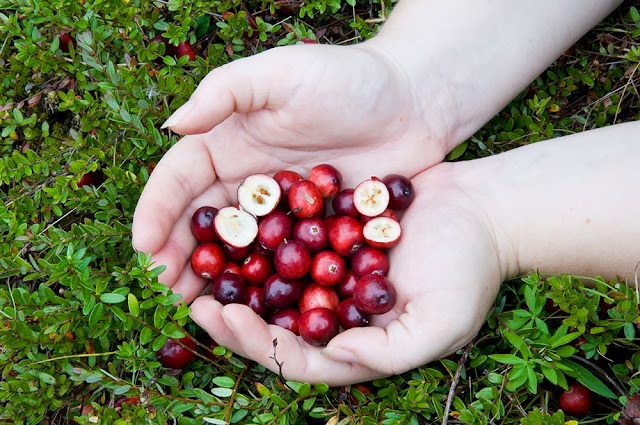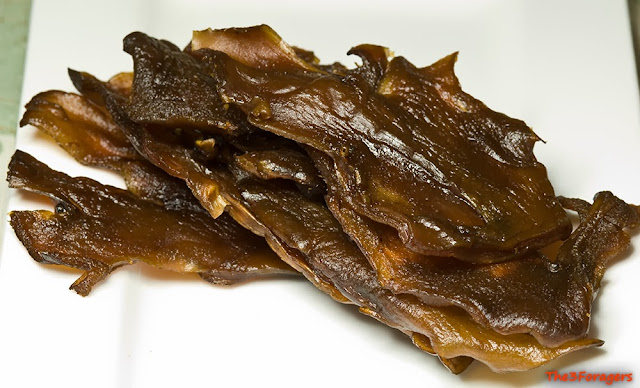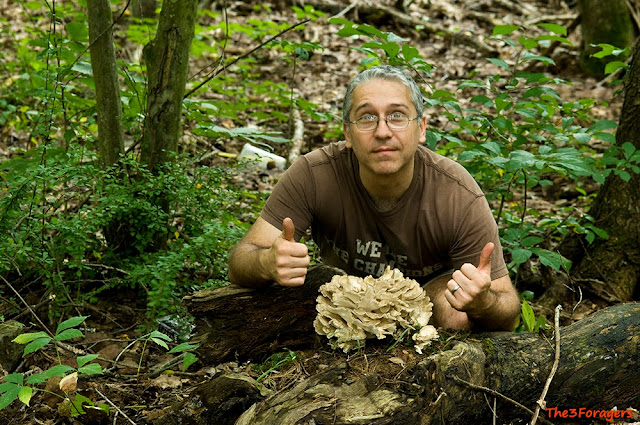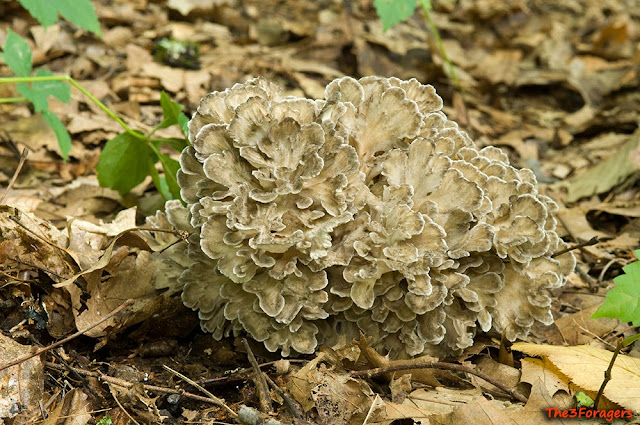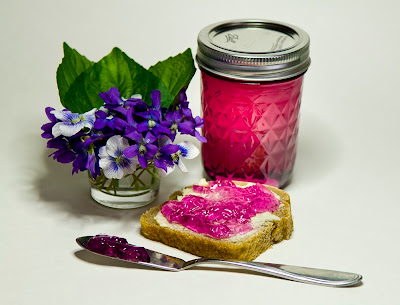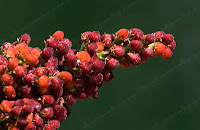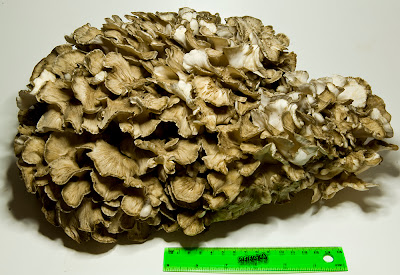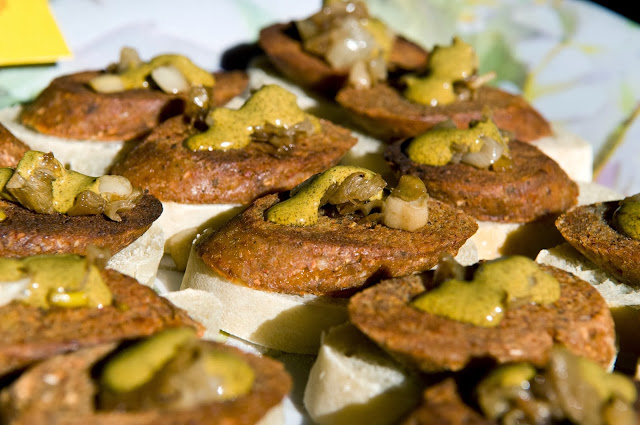 |
| "Chicken" Sausage with caramelized ramps and garlic mustard seed mustard on bread |
Living in a 2/3 vegetarian house means we often eat our fungal finds as meat substitutes in recipes. Many of our favorite wild mushrooms have incredibly meaty textures and flavors, most notably the hen of the woods (Grifola frondosa) and the chicken or sulfur shelf (Laetiporus sulphureus) mushrooms. They are both polypores, having pores on their underside instead of gills, and are often large specimens that can provide several meals from a single fruiting body. We have successfully used this recipe for both mushrooms, but I suggest using this recipe as more of a guideline and template for your own tastes and the mushrooms you may find. If the chicken mushroom is too young, it may be a little too wet for this recipe, so we use fully shelved but still tender fronds. You could also change up the spices to your tastes.
We didn't use any special equipment, just a food processor and a steamer. We used tapioca flour and wheat gluten along with sticky arborio rice to bind the sausage together. Your yield will be based on the size of the sausages you make, we usually make them about the size of Italian sausages and double or triple the recipe. The taste will improve greatly once the sausages are sliced and fried until crispy, after the initial steaming and cooling period. We have taken the sausages camping to cook up for breakfast and to a potluck, served with our wild garlic mustard seed mustard and autumn olive ketchup. The sausages also freeze nicely, so we can make lots of them when we find a big chicken flush or too many hens to eat fresh.
 |
| "Hen" Sausage with caramelized ramps and autumn olive ketchup on bread |
Mushroom Sausages Makes about 4 sausages
10 oz. (by weight) raw hen or chicken mushroom
1 tsp sunflower oil
1/4 tsp ground coriander
1/2 tsp poultry seasoning
1/2 tsp marjoram
1/2 tsp sea salt
1 1/2 tsp granulated garlic
3 Tbsp tapioca flour
5-6 Tbsp wheat gluten powder
1/3 c. cooked arborio rice
1. Saute the mushroom with the sunflower oil over low heat for about 15 minutes. Sprinkle the coriander, poultry seasoning, marjoram and salt over the warm mushrooms and allow the mixture to cool.
2. In a food processor, add the mushroom and spice mixture, sprinkle in the tapioca flour, wheat gluten, and pulse the mixture. Add the cooked arborio rice and pulse to combine. The mixture will be crumbly, but sticky.
3. Take a piece of aluminum foil and place about one quarter of the mixture in the center. Squeeze the mixture together with your hands into the shape of a sausage. Roll up the foil around the sausage and twist the ends tightly to make a foil "casing".
4. Place the wrapped sausages in a steamer over simmering water and steam for 30 minutes. Remove from the steamer and allow the sausages to cool.
5. Remove the foil casing, the sausage should hold its shape, and chill it for a few hours to firm it up. To eat, slice and saute in a hot pan with oil until crispy.
 |
| Hen of the Woods |
 |
| Chicken Mushroom |


